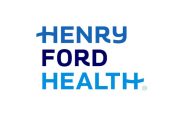
More than six years after the Affordable Care Act (ACA) became law, three years after the first open-enrollment period, and two years after auditors first obtained exchange coverage fraudulently, it is still easily possible to get health insurance — and thousands of dollars in taxpayer subsidies — without having to prove one is eligible to enroll, the Government Accountability Office (GAO) reports.
At the request of six congressional-committee chairmen, the GAO once again, in 2016, attempted to obtain coverage using fictitious identities and documents and found that little had changed since its previous attempts. Seventy-five percent of GAO’s fake applicants were approved for exchange coverage, in some cases without even being asked to supply documentation proving their eligibility.
One of the big loopholes in the ACA is the existence of Special Enrollment Periods (SEPs), opportunities for people to obtain insurance outside the standard annual enrollment period. SEPs are supposed to be restricted to those experiencing major life events that could affect their existing coverage, such as marriage, divorce, or losing a job. The Centers for Medicare and Medicaid Services (CMS) reported that 1.6 million individuals enrolled in coverage during an SEP in 2015 through Healthcare.gov.
Although the law requires the exchange to verify an applicant’s eligibility for insurance and subsidies, “there is no specific legal requirement to verify the events that trigger an SEP,” wrote the GAO. Exchanges are required neither to request documents to support the SEP event nor to authenticate such documents if submitted. The law allows them simply to rely on the applicant’s personal attestation of the event.
This, of course, opens the door to a great deal of fraud. Twice before, the GAO was able to obtain coverage for fictitious individuals in similar tests. In 2014, 11 of 12 such “persons” were approved for coverage; in 2015, 17 of 18 were. Insurers have complained that the Obama administration’s lax approach to SEPs has allowed many people to forgo buying insurance until they need it, leading to a larger proportion of high-cost beneficiaries than would otherwise be the case.
CMS announced that it would begin requiring supporting documentation for certain SEP events beginning June 17, 2016. State exchanges are not required to adopt this process.
The GAO’s undercover test, which occurred after June 17, consisted of 12 applications for insurance, split between the federal and state exchanges. Half the applications were made online; the other half, by telephone. Each fictitious applicant testified that he had experienced an event that would trigger an SEP. In addition, each applicant declared an income that would qualify him for both types of federal subsidies, one to assist with premiums and another to assist with out-of-pocket charges.
In fully half of these cases, no supporting documentation was even requested by the exchanges; applicants’ self-attestations were considered sufficient evidence of their eligibility for an SEP. For the other half, the GAO supplied phony documentation. In at least two cases in which the GAO provided documents that included fictitious contact names and telephone numbers to verify the documents’ authenticity, the exchanges never called the bogus phone numbers but approved coverage anyway.
In all, 9 of the 12 phony applicants were approved for exchange coverage. The applicants were also approved for both premium-assistance subsidies totaling about $18,960 annually and cost-sharing subsidies that, had the applicants actually used medical services, could have cost taxpayers many thousands of dollars more.
The exchanges’ actions, unfortunately, are perfectly legal under the terms of the ACA, as noted above. Indeed, that was the primary defense offered by the various exchanges when the GAO revealed the results of its test to them. “However,” observed the agency, “prudent stewardship and good management practices suggest that fraud risks be understood and managed to protect public funds.”
There are two reasons that public funds are treated so carelessly when it comes to ObamaCare. One is that, as usual, people are considerably less careful with others’ money than they are with their own. The second is that it is in the Obama administration’s interest to get as many people enrolled in the exchanges as possible in order to claim success in reducing the number of uninsured.
It is not, after all, as if the dangers uncovered in this report, along with many others, were unknown to the administration. The GAO has conducted this type of test for three consecutive years with similar results. In addition, according to the report, the agency issued three other reports this year, one “addressing CMS enrollment controls and the agency’s management of enrollment-fraud risk” and the other two “addressing the potential vulnerabilities to fraud in the application, enrollment, and eligibility-verification controls” of the exchanges.
The first report, issued in February, included eight recommendations to improve matters. CMS concurred with those recommendations and told the GAO in April that it had taken specific actions in response. The GAO asked for corroborating evidence in May but had received none by the time of its latest report. “Consequently,” the agency declared, “we consider all eight recommendations to remain open.” The GAO declined to add any new recommendations to the report.
In short, the latest report doesn’t break any new ground when it comes to potential ObamaCare fraud. It does, however, provide congressional Republicans and President-elect Donald Trump with further ammunition for their planned battle to repeal the ACA. And with Democrats and their activist and media allies arrayed on the other side of the battlefield, Republicans are going to need all the firepower they can get.




